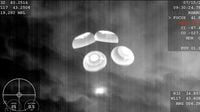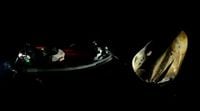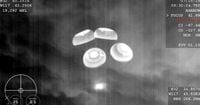On July 15, 2025, a landmark private spaceflight mission concluded with a Pacific Ocean splashdown off the coast of Southern California, marking a historic return for astronauts from India, Poland, and Hungary—the first in over four decades from these nations to venture into space. The SpaceX Crew Dragon capsule, named "Grace," undocked from the International Space Station (ISS) on July 14, 2025, and parachuted safely into the ocean less than 24 hours later, completing nearly three weeks in orbit.
The mission, chartered by Houston-based Axiom Space, was the company’s fourth crewed flight to the ISS since 2022. It represents a significant step in NASA's ongoing initiative to open space to private enterprises and broaden global participation beyond traditional spacefaring nations. Axiom Space is among several companies developing private space stations intended to replace the ISS, which NASA plans to retire by 2030 after more than three decades of operation.
Leading the crew was Peggy Whitson, a former NASA astronaut and Iowa native known for holding the record for the longest cumulative time spent in space by any American or woman. Before this mission, Whitson had logged 675 days across four missions; with the completion of this flight, her record now stands at 695 days over five missions. Whitson, who grew up in Beaconsfield, Iowa, and earned degrees in biology and chemistry from Iowa Wesleyan University, was inducted into the U.S. Astronaut Hall of Fame earlier in 2025.
Joining Whitson were three first-time astronauts: Shubhanshu "Shux" Shukla from India, Sławosz "Suave" Uznański-Wiśniewski from Poland, and Tibor Kapu from Hungary. Each of their countries paid more than $65 million (€55 million) for the mission, underscoring their commitment to reestablishing a presence in human spaceflight. Notably, the last time India, Poland, and Hungary sent astronauts into space was during the late 1970s and 1980s, when they launched alongside Soviet missions.
During a heartfelt farewell ceremony on July 13, 2025, Tibor Kapu expressed the mission’s broader significance: "We will spread the word in our countries that these things are within our reach. These things are possible even for smaller countries like ours." His Polish counterpart, Uznański-Wiśniewski, added, "The sky is no longer the limit. We can explore space." These sentiments highlight the mission’s role in inspiring new generations and expanding the boundaries of international space collaboration.
The Ax-4 crew lifted off from Launch Complex-39A at NASA’s Kennedy Space Center on June 26, 2025, aboard a SpaceX Falcon 9 rocket. They docked with the ISS a day later, beginning their mission expected to last about two weeks but ultimately extended by four days to optimize orbital phasing for their return. While aboard the ISS, the astronauts conducted more than 60 experiments and technology demonstrations, involving contributions from 31 countries—surpassing any previous Axiom mission in scientific output.
The experiments spanned a variety of disciplines, including biomedical research, materials science, and technology testing, reflecting the mission’s multifaceted objectives. The crew also engaged in public outreach, sharing their experiences and discoveries with audiences worldwide, further amplifying the mission’s impact beyond the scientific community.
On July 14, 2025, at 7:15 a.m. EDT (11:15 GMT), the Crew Dragon capsule undocked from the ISS, commencing a 22-hour journey back to Earth. The spacecraft began its atmospheric descent at approximately 5:18 a.m. EDT (9:18 GMT), enduring the intense heat and friction of reentry. Drogue parachutes deployed to stabilize the capsule, followed by the opening of four main parachutes that slowed its descent for a gentle splashdown at 5:32 a.m. EDT (9:32 GMT; 2:32 a.m. PDT).
The recovery vessel "Shannon" was on hand to retrieve the astronauts and bring them safely aboard. Emerging from the capsule into the early morning darkness, the crew waved and smiled, their successful return marking a triumphant end to a mission that blended scientific achievement with cultural pride.
This splashdown marked only the second time SpaceX has recovered a crewed capsule on the U.S. West Coast, a practice adopted to mitigate risks associated with debris from the capsule’s trunk during reentry, previously observed in Atlantic and Gulf of Mexico recoveries.
Looking ahead, the ISS will soon welcome its next crew, with SpaceX’s Crew-11 mission scheduled for liftoff no earlier than July 31, 2025. That mission will continue NASA’s commitment to maintaining a human presence in low Earth orbit for the foreseeable future, even as private companies like Axiom prepare to take the reins with their own orbital platforms.
Reflecting on the mission’s success, Peggy Whitson radioed moments after splashdown, "Thanks for the great ride and safe trip." Her leadership and experience were instrumental in guiding a diverse crew through complex operations and scientific endeavors, setting a precedent for future multinational private missions.
The Ax-4 mission stands as a testament to the evolving landscape of space exploration, where private companies and emerging space nations collaborate to push humanity’s reach further. It rekindles the legacy of countries like India, Poland, and Hungary, reminding the world that space is no longer the exclusive domain of a few but a frontier open to all who dare to dream.



